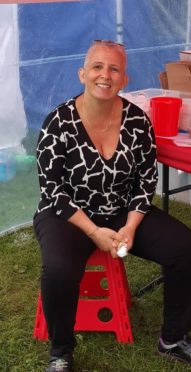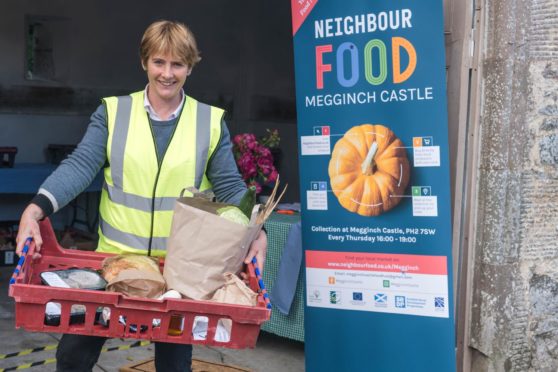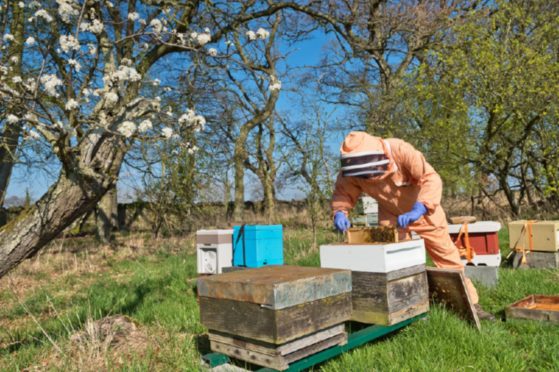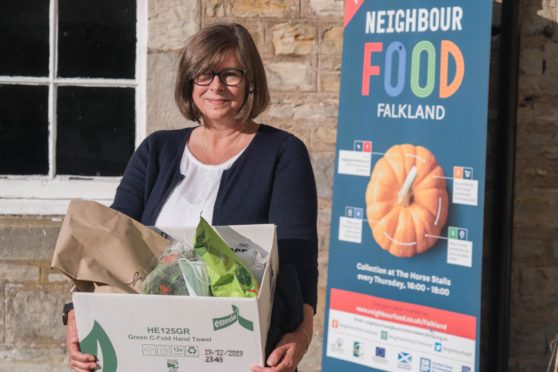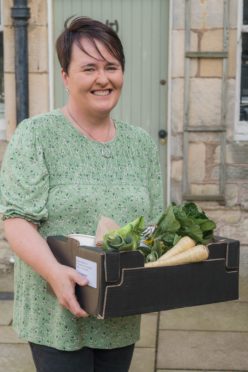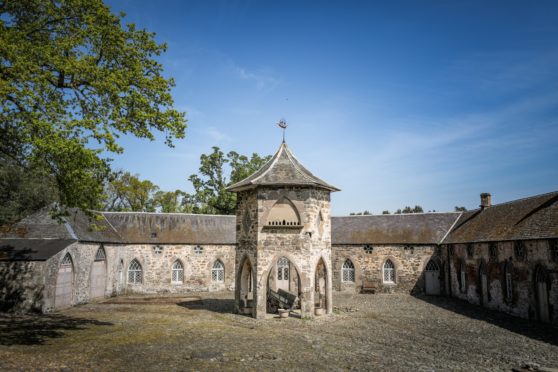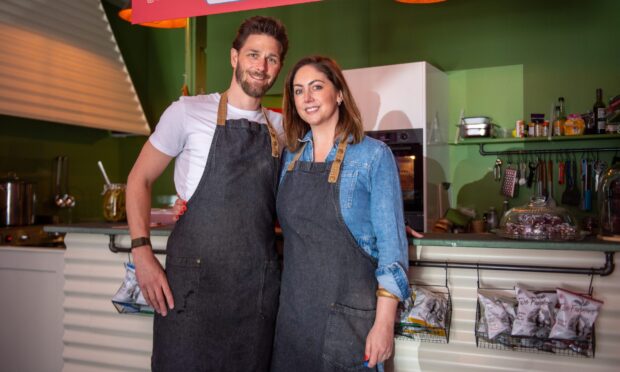A small Auchterarder producer has seen its orders soar thanks to being part of a “click and collect” NeighbourFood farmers’ market project across Scotland.
SimplyFlo, which specialises in authentic Lebanese cuisine, went from 35 to 250 orders a month by being part of the charity Forth Environment Link’s Regional Food initiative.
The programme has injected nearly a quarter of a million pounds into the rural economy – helping keep food and drink producers stay afloat at a critical time for the industry.
And SimplyFlo is just one of more than 110 Scottish food and drink producers, many from our area, who have had a lifeline from the initiative as it provides them with a reliable, local route to market at a time when much of industry has shut down or is running at reduced capacity due to Covid-19 restrictions.
Thanks to the LEADER funded project, there are now six NeighbourFood markets running weekly local food collections; from Balfron and Killin in Stirlingshire and Peebles in the Scottish Borders, to Falkland in Fife and the Carse of Gowrie and Blairgowrie in Perthshire.
They follow in the footsteps of Scotland’s first NeighbourFood market, which was set up by Forth Environment Link in Stirling back in 2018.
Since then more than 3,000 Scots have signed up to shop through the NeighbourFood platform, with around half of those shopping regularly with their local market.
Security during uncertainty
Producing authentic, homemade vegan and vegetarian Lebanese cuisine, Florence Gebara from SimplyFlo says NeighbourFood has given her business security at a time of great uncertainty.
“We joined NeighbourFood in lockdown last year and now supply nine of their markets across Scotland, from Megginch Castle in Perthshire to Falkland in Fife.
“We love it as it brings us face-to-face with our customers, in a safe controlled environment, so that they can get to know us and can see the passion that goes into the dishes we create.
“We’ve gone from 35 orders in our first month with NeighbourFood, to over 250 orders per month!”
Pierre Leger of Crieff-based Strathearn Cheese Company said: “It’s great! It puts the producers in contact with the customers and vice-versa. It’s great to be able to sell directly to the customers.”
‘Brilliant’
“NeighbourFood has been brilliant,” added Megginch Castle’s guardian and NeighbourFood market host, Catherine Drummond-Herdman.
“Otherwise people cannot get their things to market and then you lose the whole dynamics of the community as well.
“It’s really important to work with children to show them how things are grown and how you can sell, so we have a scheme working with the Duke of Edinburgh Awards in the garden.
“Hopefully the children there are going to grow their produce and they will then be able to sell it through the NeighbourFood hub.”
Gavin Ramsey of Tay Bees and Honey, says Megginch is the perfect environment for bees due to its ancient orchard and varied habitats.
Of the initiative, he said: “NeighbourFood is a great chance to get the products to people locally. I have a background in plant science so I do my best to separate the different kinds of honey that I get from different places and different seasons.
“That’s an angle you don’t get with commercial products in supermarkets in terms of the diversity of local honeys that you can find.”
Opportunity
Falkland NeighbourFood, has injected nearly £12,000 into the local economy since launching last June at the Centre for Stewardship.
Market hosts Falkland Estate have helped local food and drink producers sell more than 400 baskets of produce over the past six months at their weekly Thursday collection.
Lesley Duffy, who helps run Falkland NeighbourFood, added: “NeighbourFood is fabulous for us at Falkland Rural Enterprises because we don’t have our own shop front so NeighbourFood gives us the opportunity on a Thursday to sell our produce, other produce as well and to meet customers talk to them about what we do here, what we grow and how it’s produced.
“For local producers it’s really good, it’s giving them an outlet, it saves them time, it saves them money as they can just pop along here and deliver multiple orders to multiple customers.
“It’s a win, win!”
Food shortages
Project coordinator Stuart Guzinski added that the network played a key role as people got to grips with the first coronavirus lockdown almost a year ago.
“The NeighbourFood network rose to the challenge of food shortages for thousands of people during the first lockdown in 2020.
“Market hosts across Scotland worked incredibly hard to mobilise volunteers and organise deliveries of food to people shielding or self-isolating in their local communities.
“And if it wasn’t for NeighbourFood, many of Scotland’s small food and drink producers would have lost all of their sales channels overnight as hospitality and face to face selling shutdown.”
The sudden reliance on local food systems last March, meant that many producers had to quickly up their capacity to meet local demand.
Stuart added: “Small producers saw their orders soar, as locals struggled to access food through their normal channels. While that initial surge in interest has settled down a little over the past year, there’s plenty of evidence to show that many people aren’t returning to their old food shopping habits – in Balfron and Blairgowrie order numbers are still three times higher than they were pre-lockdown.”
Pivotal
Forth Environment Link believes the re-localisation of Scotland’s food systems can play a pivotal part in Scotland’s post Covid-19 recovery, helping tackle climate change by reducing food miles and helping the transition towards fairer more resilient economy.
“Lockdown has taught us that click and collect markets like NeighbourFood play a vital role in serving their communities; helping both consumers and producers,” Stuart continued.
“Our network was able to supply fresh food to people and provide local businesses with an income only because they acted in community rather than commercial interest; they were supported by an army of volunteers who rallied to the cause.
“Covid-19 has shown that our local food systems can be incredibly resilient; but they need our ongoing support and investment if we want them to be around in good times and in bad.”
Join us in shopping local online with NeighbourFood 's virtual market🥕
We are part of the Blairgowrie & Rattray market alongside fantastic local producers and artisan businesses offering baked goods, fruit and veg, preserves & more.
Read more here.https://t.co/fKsJL2wxQ7 pic.twitter.com/e9NgGWQv6S
— Highland Boundary (@HighlandBndry) February 24, 2021
The NeighbourFood market model works on an 80/20 split, with producers keeping the lion’s share of the profit (compared to around 25/75 with supermarkets).
Hosts and the platform share the remaining 20%, with some markets choosing to reinvest their profit in emergency food supply during the Covid-19 crisis.
With climate emergency, a diet related health crisis, inequality widening and Covid-19 disrupting food supplies, can ‘quaint’ local food save the world?
Fresh and in season
NeighbourFood founder Jack Crotty thinks so. He said: “When we buy the tastiest food we can, the rest falls into place. Local food is fresher, it’s in season and it’s going to have higher nutritional value.
“It’s supporting the environment, the local economy and building a more resilient food system that’ll still be available the next time supply chains are disrupted.
“Ultimately, it is good value for the fair price paid, and encourages people to value food more and waste less, making the alternatives we have become used to seem like a lesser quality choice.”
